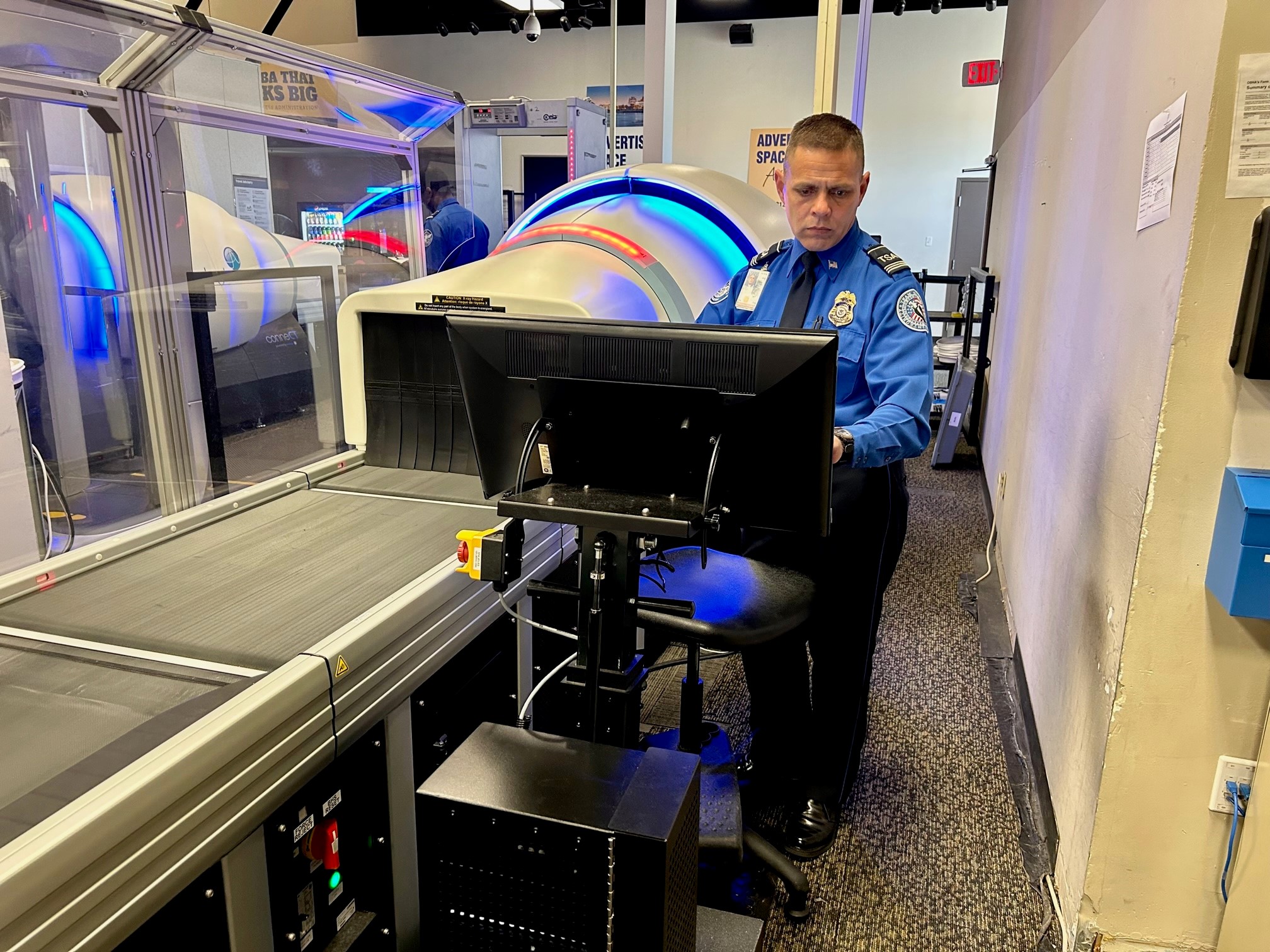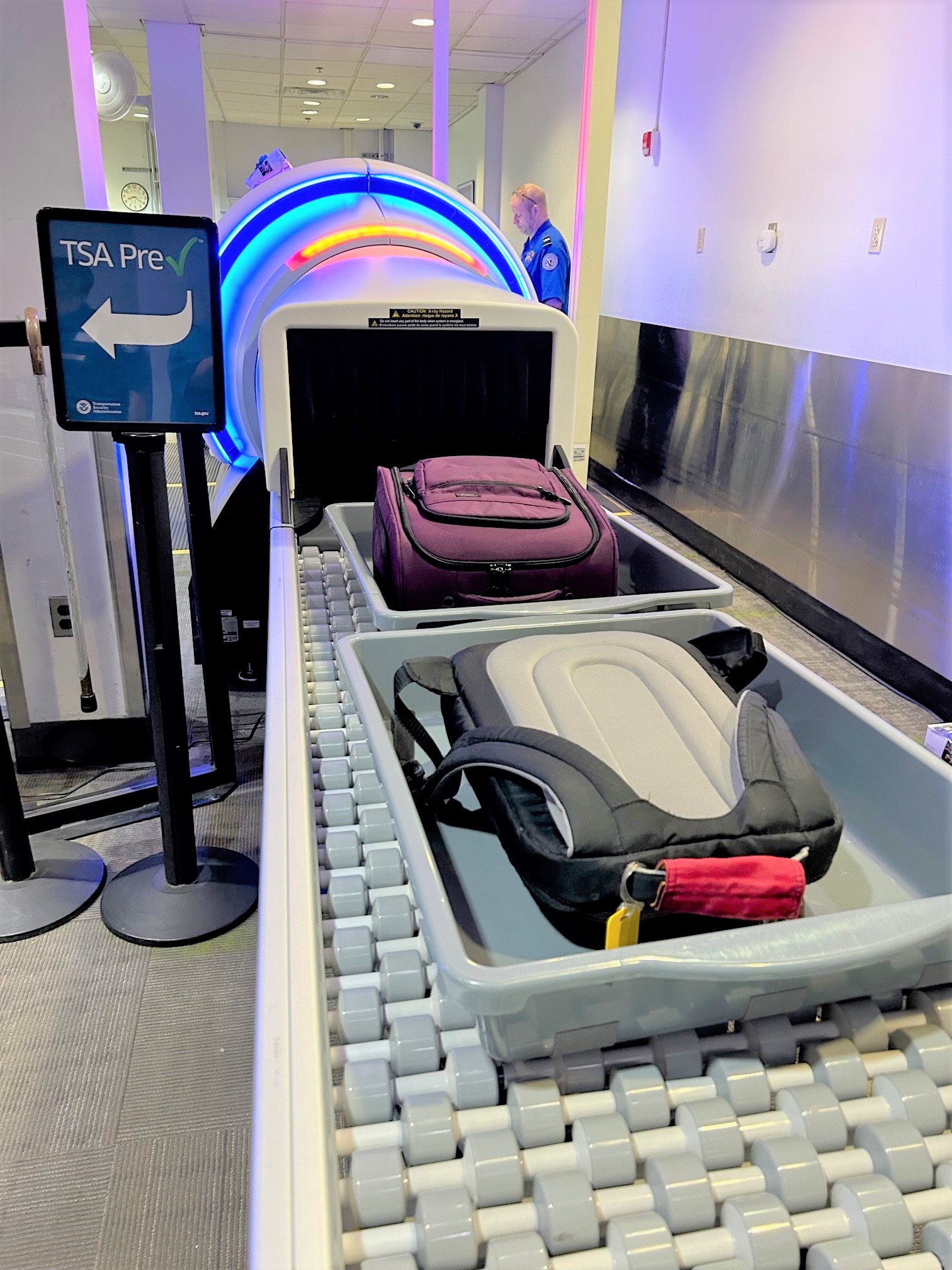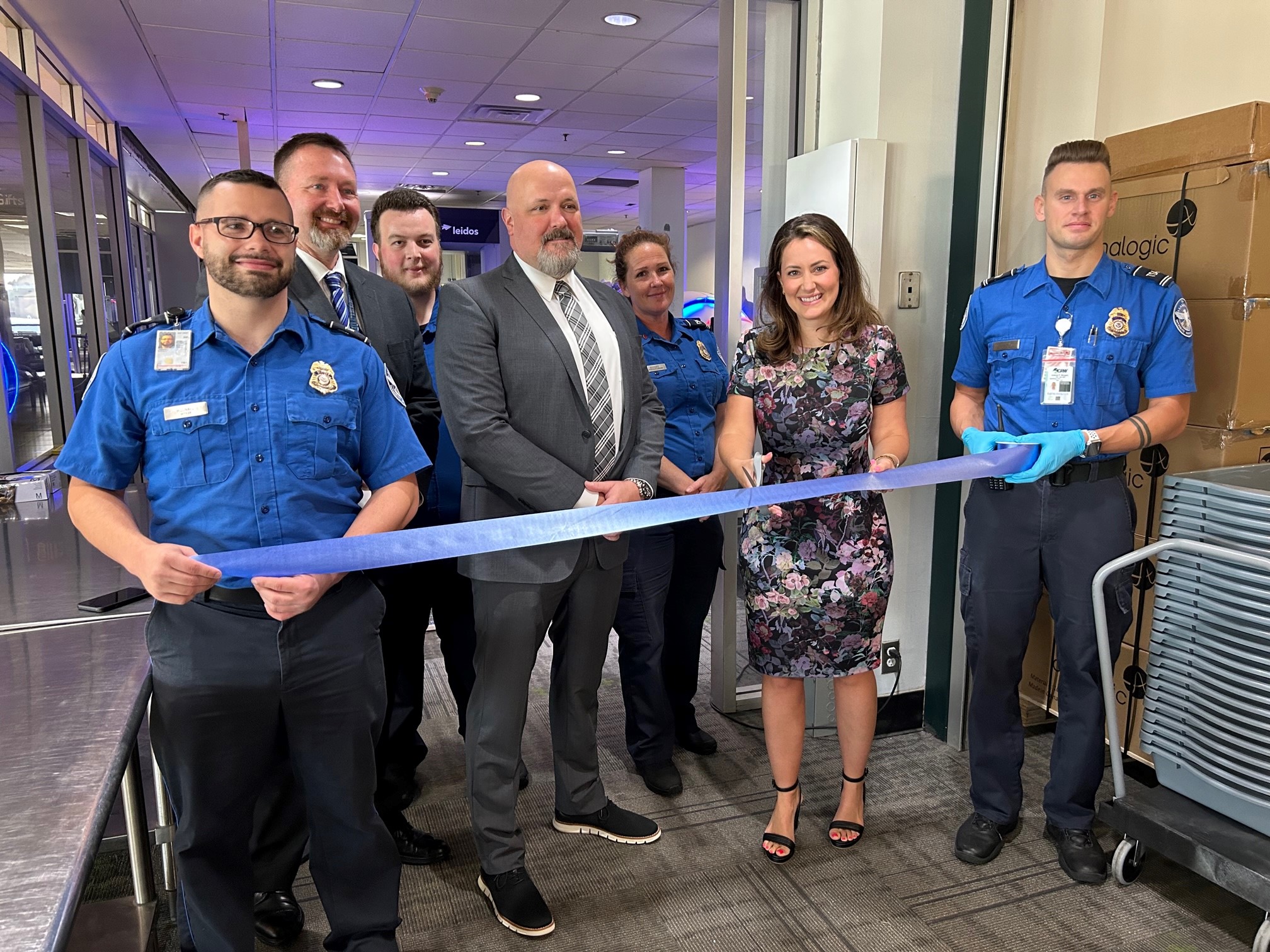 A TSA officer uses a computed tomography scanner. (TSA photo)
A TSA officer uses a computed tomography scanner. (TSA photo)
CHARLESTON, W.Va. – The Transportation Security Administration (TSA) has installed two new state-of-the-art computed tomography (CT) checkpoint scanners that enhance screening capabilities of carry-on items brought to the checkpoint by passengers ticketed to fly out of West Virginia International Yeager Airport.
The new CT scanners screen carry-on items at the checkpoint by applying a sophisticated algorithm as they generate a 3-D image of the contents of carry-on bags. This new technology creates such a clear image of a bag’s contents that the system can automatically detect explosives and other threat items by shooting hundreds of images with an X-ray camera spinning around the items to provide TSA officers with a 3-D view of the contents of a carry-on bag. A TSA officer can view the 3-D X-ray image on a monitor and manipulate the image to get a better view of the bag’s contents, ultimately reducing the number of carry-on bags that need to be opened and manually inspected. However, if a bag requires further screening, a TSA officer will inspect it to ensure that a threat item is not contained inside.
In addition to enhanced security, the CT units improve the traveler’s experience because passengers using these machines are permitted to leave their laptops and other electronic devices in their carry-on bags. Additionally, passengers screened in security lanes with CT units do not need to remove their travel-sized 3-1-1 liquids.
“Our officers’ use of CT technology substantially improves our threat detection capability at the checkpoint,” said John C. Allen, TSA’s Federal Security Director for West Virginia. “Previously, our screening technology for carry-on bags used 2-D images. The CT technology applies advanced algorithms for the detection of explosives, including liquid explosives and other threat items.”
With the new CT scanners, all carry-on items, including roller-bags, need to be placed into a bin for screening instead of being placed directly on the conveyor belt. The new scanners are more efficient for the passenger than the older advanced technology units, which provided TSA officers with only a 2-D image and required the passenger to remove, or divest, various items from their carry-on bags before being screened. Since the new CT scanners do not require divestiture of items from carry-on bags, it also saves time.
CT units have a slightly smaller entry tunnel and not all larger carry-on bags will fit into the units. TSA recommends that large carry-on items be checked with the airline.
TSA officials also encourage travelers to get to the airport early and save time by placing items from pockets such as keys, cell phones, loose change, etc. into in their carry-on bags instead of into bins to help ensure there are no items left behind in bins. Doing so also helps to speed the screening process.

